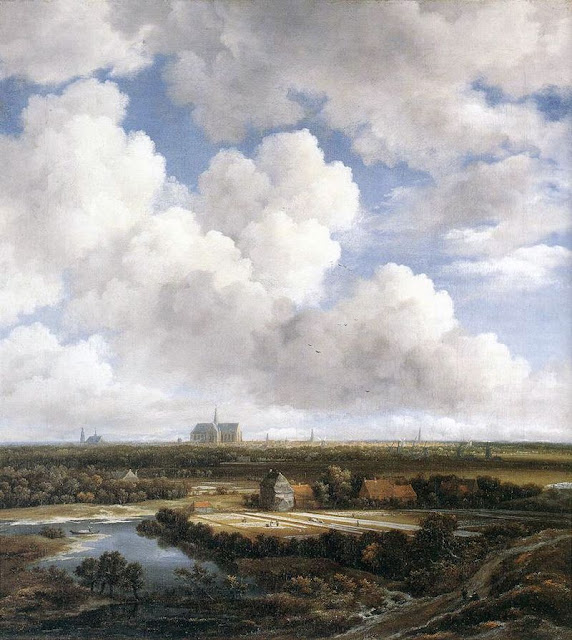Barend Cornelis Koekkoek
Boomrijk landschap bij ondergaande zon
1850
oil on panel
32,6 x 29,2 cm
Barend Cornelis Koekkoek
Eikenbos
1856
oil on canvas
134 x 157 cm
Museum Boijmans van Beuningen
In the woods nearby my house I mostly find piece in mind. My mind is always a busy mind, a lot of thinking going on. To clear my head I like to go running for several kilometers or walk our dogs for hours in the woods.
It seems that trees have a slowing and calming effect on my brain.
And when the light in the forest touches the leaves and branches of the trees, beautiful shadows, shapes, hues and colors are formed on everything it touches, colors I'm afraid I could never paint or even put words to to describe them.
These colors and shapes have a huge effect on me, thought and image immerse themselves in a whole new world, my world.
And as I stand among all these shapes and colors, it suddenly dawns on me that these still, sturdy but vibrant trees have been here for years, decades and probably even longer. As if time has stood still and nothing changes here, as if I am standing and taking a seat in a painting by Barend Cornelis Koekkoek.
The forests in Twente are interspersed by the scenic landscape with and without some cattle, including some cows, sheep and chickens. Brilliant and without any mechanical presence also timeless, stunningly beautiful.
For me, BC Koekkoek captures the light so beautifully in his paintings, the way he draws and paints shapes and colors. As if he gives the trees a character, they look like quirky personalities who are the main characters in a painting that makes all the painted people fade into the background.
Udona Boerema, 2022
Udona Boerema
Zonder titel
2020
transparant binder and acrylic paint on linen
200 x 160 cm
Udona Boerema (NL)
Zonder titel
2022
transparant binder and acrylic paint on linen
160 x 140 cm










%20ok.jpg)








1972.jpeg)

